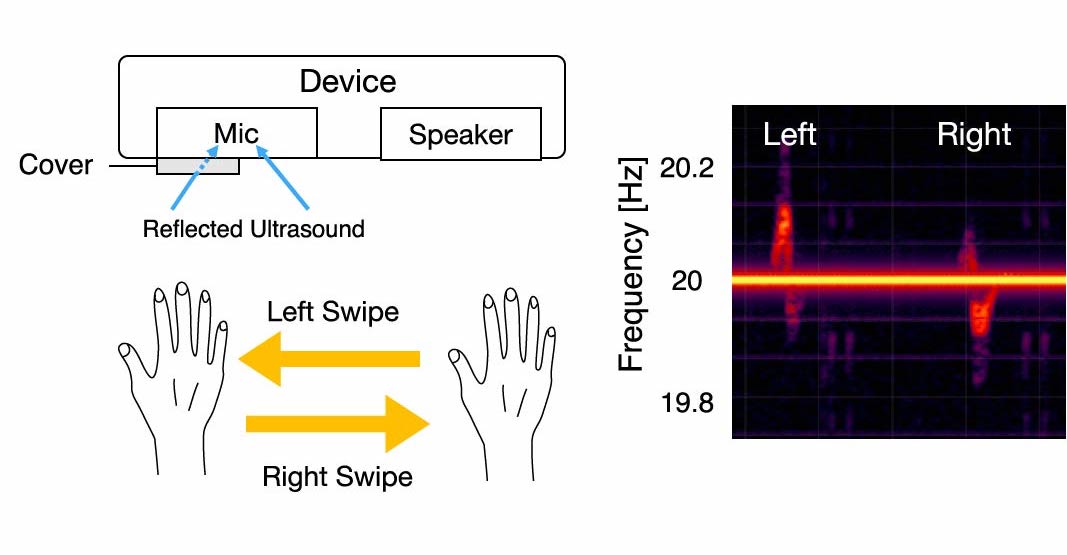マイクの部分遮蔽を用いた超音波によるジェスチャ認識
ジェスチャ認識は,コンピュータとのインタラクション手法として広く用いられるようになってき ている.特に,画面が小さく身体に常にセンサを装着しているような,モバイル/ウェアラブルコンピューティング環境では,ジェスチャによる操作が効果的であるといえる.しかし,従来手法ではデバイスに追加のハードウェアが必要であったり,識別できるジェスチャに制限がある.そこで本研究では,デバイスに搭載されているマイクとスピーカを用いた,超音波によるジェスチャ認識手法を提案する.スピーカからは超音波を発信し,手などの対象から反射された超音波をマイクで取得する.対象の動きにより発生するドップラー効果を用いて,ジェスチャを識別する. さらに,マイク部に取得する音響特徴が変化するようなカバーを装着し,従来の超音波による手法では困難であったジェスチャの識別を可能にする.本手法では,デバイス内蔵のマイクとスピーカを利用するため,ジェスチャ認識のための追加のデバイスが必要ない.また,3D プリントされたカバーを用いて音響特徴を変化させるため,ジェスチャ識別能力拡張のために電力を消費する追加のデバイスが必要ない.
Improving Ultrasound-based Gesture Recognition using a Partially Shielded Single Microphone
We propose a method to improve ultrasound-based in-air gesture recognition by altering the acoustic characteristics of a microphone. The Doppler effect is often used to recognize ultrasound-based gestures. However, increasing the number of gestures is difficult because of the limited information obtained from the Doppler effect. In this study, we partially shield a microphone with a 3D-printed cover. The cover alters the sensitivity of the microphone and the characteristics of the obtained Doppler effect. Since the proposed method uses a 3D-printed cover with a single microphone and speaker embedded in a device, it does not require additional electronic devices to improve gesture recognition. We design four different microphone covers and evaluate the performance of the proposed method on six gestures with eight participants. The evaluation results confirm that the recognition accuracy improves from 60.4% to 75.7% on average using the proposed method. We also discuss the velocity of the hand gesture and the effect of the cover for conventional usage of the microphone.
